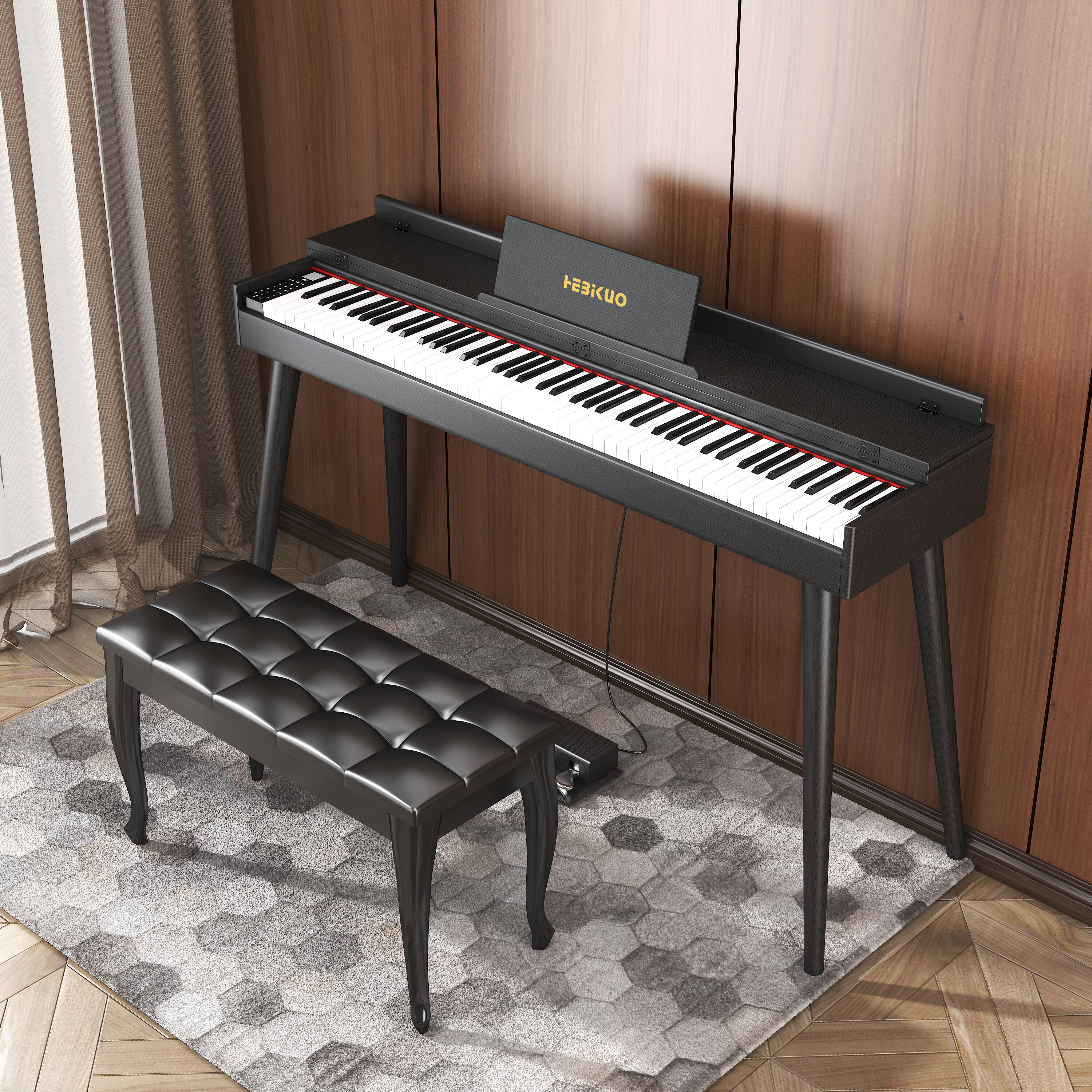Currency



The History and Evolution of Electrical Piano
Electrical Piano have come a long way since their inception in the early 20th century. The first electronic keyboard was the Telharmonium, invented by Thaddeus Cahill in 1897. It was a massive instrument that used rotating tone wheels to produce sound. However, it was not until the 1960s that Electrical Piano became widely available and popular.
The first Electrical Piano were monophonic, meaning they could only play one note at a time. They were also very expensive and difficult to use. However, as technology improved, Electrical Piano became more affordable and easier to play.
In the 1970s, the synthesiser was invented, which allowed musicians to create a wide range of sounds and effects. This led to the development of Electrical Piano that could mimic the sounds of other instruments, such as pianos, organs, and strings.
Today, Electrical Piano are used in a wide range of musical genres, from classical to pop to electronic dance music. They are also used in music production and recording studios.
The Structure and Construction of Electrical Piano
Electrical Piano consist of several parts, including the keyboard, sound source, speakers, and control panel. The keyboard is the most visible part of the instrument and is used to play notes and chords. The sound source is the electronic circuitry that generates the sound, while the speakers amplify the sound and project it into the room. The control panel allows the musician to adjust the sound and effects.
The keyboard is made up of keys, which are usually made of plastic and are weighted to simulate the feel of a traditional piano. The sound source can be either analogue or digital and can include a variety of sound synthesis methods, such as subtractive synthesis, additive synthesis, and frequency modulation synthesis.
The speakers can be built into the keyboard or can be external, and they can range in size from small, portable speakers to large, powerful speakers for use in concert venues.
The Sound and Tone of Electrical Piano
Electrical Piano can produce a wide range of sounds and tones, from realistic piano and organ sounds to synthetic and experimental sounds. The sound can be adjusted using various controls on the control panel, such as volume, tone, and effects.
One of the advantages of Electrical Piano is that they can produce a consistent sound, regardless of the environment or conditions. This makes them ideal for use in live performances and recording studios.
Playing Techniques and Fingerings for Electrical Piano
Playing Electrical Piano requires a different set of techniques and fingerings than playing traditional pianos or organs. Some basic techniques include playing chords, arpeggios, and melodies. It’s important to practise regularly and to start with simple exercises before moving on to more complex pieces.
One helpful practise method is to break down a song into smaller sections and practise each section separately before putting them together. This can help you master difficult passages and improve your overall playing ability.
Teaching Methods and Resources for Electrical Piano
There are many resources available for learning how to play Electrical Piano, including instructional books, videos, and online courses. It’s important to choose a method that works best for your learning style and skill level.
Maintenance and Care for Electrical Piano
To keep your electronic keyboard in good condition, it’s important to take proper care of it. This includes keeping it clean and dry, storing it in a protective case, and avoiding extreme temperatures and humidity.
You should also regularly check the tuning of your electronic keyboard and make any necessary adjustments. This will help ensure that your instrument sounds its best and stays in tune during performances.
In conclusion, Electrical Piano have come a long way since their inception in the early 20th century. They are versatile instruments that can produce a wide range of sounds and tones and are used in a variety of musical genres and settings. With proper care and practise, anyone can learn to play the electronic keyboard and enjoy the many benefits it has to offer.
Email cannot be empty
Password cannot be empty
Email format error
Email cannot be empty
Email already exists
6-20 characters(letters plus numbers only)
The password is inconsistent
Email format error
Email cannot be empty
Email does not exist
6-20 characters(letters plus numbers only)
The password is inconsistent